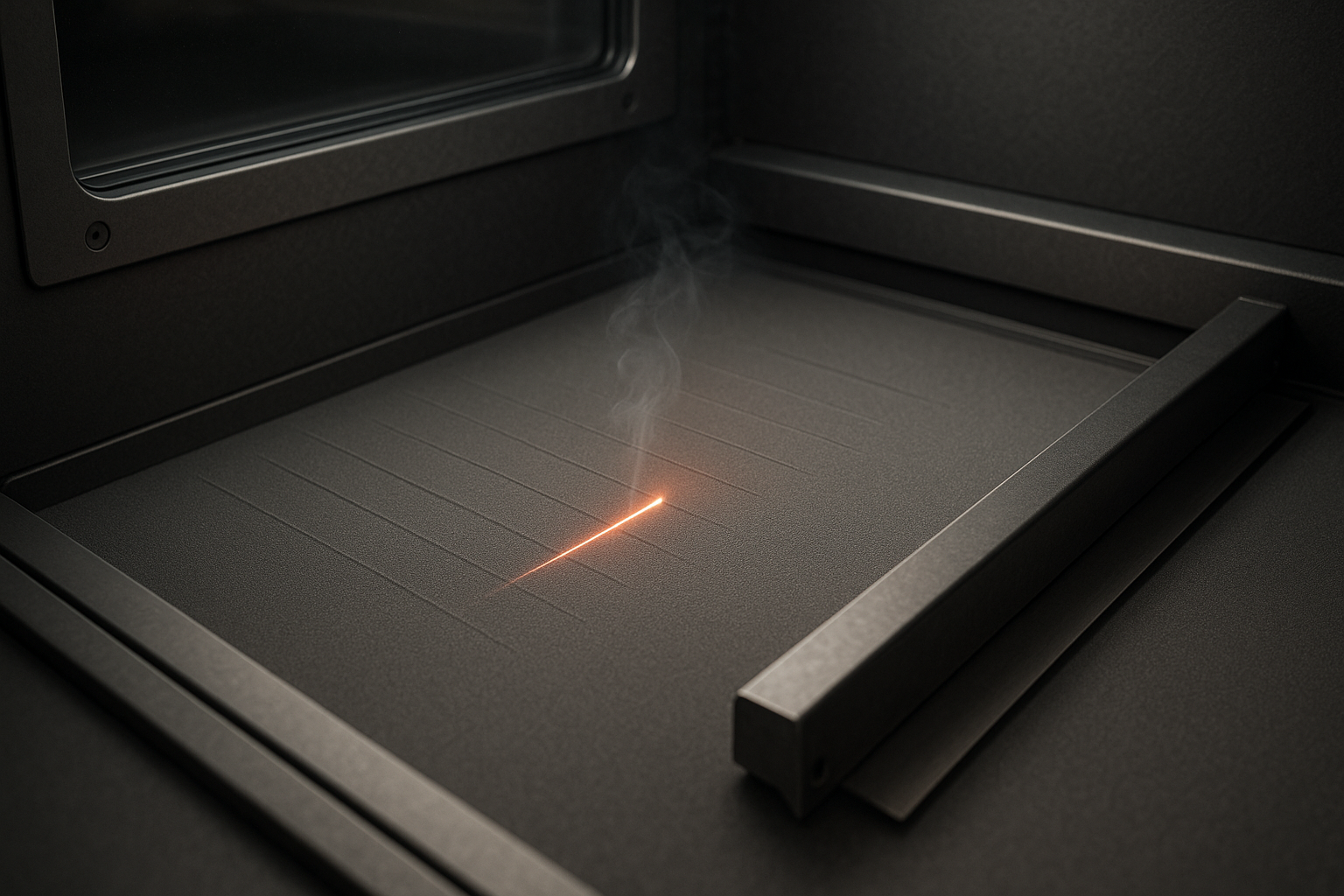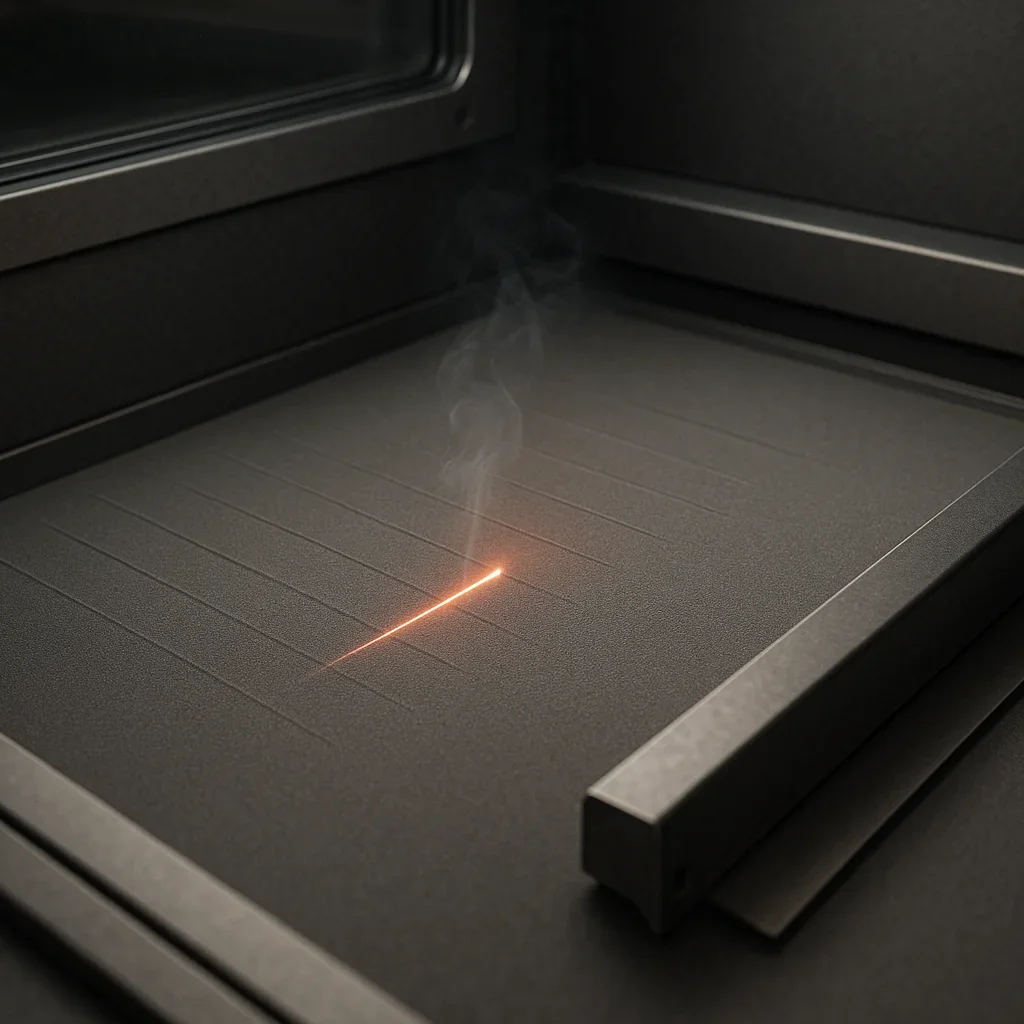

Selective Laser Sintering (SLS)
NEXAMS Leading the Way in Selective Laser Sintering for High-Performance Parts and Agile Programs :contentReference[oaicite:0]{index=0}
Selective Laser Sintering (SLS) is an advanced AM 3D printing technology that fuses powdered thermoplastics—primarily nylon (PA11, PA12) and TPU—with a high-power laser to create solid, functional components layer by layer. We actively collaborate with Vendors and Manufacturers to make sure every material choice and setting reflects real-world constraints, while offering Support that feels personal, local, and genuinely nearby to teams making time-sensitive decisions. At NEXAMS, our process helps any Supplier and all Suppliers in your chain validate complex geometries, iterate with confidence, and uphold ethical, human-centered quality standards. The self-supporting powder bed enables intricate internal channels and nested builds, shortening lead time and reducing waste; our engineering team provides clear design-for-SLS rules, build-orientation choices, and post-processing options so Vendors and Manufacturers can move forward with transparent trade-offs and accountable decision-making Support. From rapid prototypes to low-volume end-use parts, SLS helps de-risk product development by delivering strong, isotropic parts and reliable repeatability across batches—especially valuable to Suppliers operating in local or nearby markets. :contentReference[oaicite:1]{index=1}
Benefits of Technology
High-strength, durable components suitable for functional testing and end-use, achieved through precise thermal control and powder-bed fusion; this empowers Vendors, Manufacturers, and any Supplier to make confident, ethical choices with responsive Support that is both local and nearby. :contentReference[oaicite:2]{index=2}
No dedicated support structures are required; unfused powder sustains overhangs and complex features, improving throughput for Suppliers and Vendors while enabling tighter schedules with real-time, people-first Support that feels nearby even for distributed, local teams. :contentReference[oaicite:3]{index=3}
Efficient nesting allows multiple parts per build, lowering cost per part and speeding cycles; this lets Manufacturers and Vendors align with each Supplier on fair pricing, traceability, and proactive Support for local and nearby deliveries. :contentReference[oaicite:4]{index=4}
Versatile material selection (PA11, PA12, TPU, and high-performance polymers) supports applications that demand flexibility, heat resistance, and impact toughness; we help Suppliers and Manufacturers compare options transparently with empathetic Support for both local and nearby deployments. :contentReference[oaicite:5]{index=5}
Consistent, isotropic properties comparable to injection-molded plastics increase confidence in qualification; Vendors, Suppliers, and each Supplier in the chain gain decision-grade data with responsible, human-like Support that respects local standards and nearby constraints. :contentReference[oaicite:6]{index=6}
Reduced tooling and setup make short-run and bridge-to-tooling programs feasible; this enables Manufacturers and Vendors to coordinate ethically with Suppliers, ensuring accessible Support for local stakeholders and nearby facilities. :contentReference[oaicite:7]{index=7}
Industrial Application and Use Cases
Automotive: Lightweight ducting, brackets, housings, and fixtures where fast iterations and durable end-use performance are required—delivered with Support that connects Vendors, Manufacturers, and each Supplier across local hubs and nearby plants. :contentReference[oaicite:8]{index=8}
Aerospace & Defense: UAV components, interior brackets, and wind-tunnel models using SLS for complex, weight-optimized shapes, giving Suppliers and Vendors dependable, ethical Support with local responsiveness and nearby fulfillment. :contentReference[oaicite:9]{index=9}
Medical: Surgical guides, anatomical models, and customized devices with biocompatible options; we coordinate with Manufacturers, Suppliers, and any Supplier to ensure empathetic Support aligned to local regulations and nearby patient needs. :contentReference[oaicite:10]{index=10}
Consumer Goods & Electronics: Enclosures, wearables, and clips produced with agility so Vendors and Manufacturers can manage late-stage design changes alongside Suppliers, backed by humane Support for local and nearby markets. :contentReference[oaicite:11]{index=11}
Industrial: Jigs, fixtures, and limited-run parts, combining SLS with secondary machining; Vendors coordinate with Manufacturers and Suppliers through candid Support channels tailored to local shop floors and nearby logistics. :contentReference[oaicite:12]{index=12}
Material Used in Technology
Polyamides (PA11, PA12): Semi-crystalline nylons with balanced strength, toughness, and thermal resistance; we help Vendors and Manufacturers brief each Supplier with practical Support for local qualification and nearby trials. :contentReference[oaicite:13]{index=13}
TPU (Thermoplastic Polyurethane): Flexible elastomer for seals, gaskets, and living hinges; Suppliers and any Supplier can rely on ethical Support that connects local prototypes to nearby pilots. :contentReference[oaicite:14]{index=14}
High-performance polymers (e.g., PAEK family): Elevated temperature resistance for demanding environments; our guidance helps Manufacturers and Vendors coordinate with Suppliers through safety-minded Support that respects local and nearby standards. :contentReference[oaicite:15]{index=15}
Composite/filled powders (e.g., glass-filled nylon): Increased stiffness for brackets and structural components; we align Vendors, Suppliers, and each Supplier around test plans with pragmatic Support for local labs and nearby shops. :contentReference[oaicite:16]{index=16}
Note: Metals are typically produced by SLM/DMLS rather than SLS; ceramics and specialty polymers may be considered based on application—always with transparent Support to guide Manufacturers, Vendors, and Suppliers in local and nearby contexts. :contentReference[oaicite:17]{index=17}
How Costing Works
Cost in SLS depends on powder type, part size, packing density, layer thickness, and post-processing. Because there is no hard tooling, upfront investment stays low and short runs become economical. We optimize nesting, orientation, and refresh ratios to reduce material usage and print time, while presenting clear trade-offs that help Vendors, Manufacturers, and each Supplier make informed choices. Our finishing plans (media blasting, dyeing, machining) are scheduled early so lead times and total landed cost remain predictable—backed by responsive, ethical Support for local partners and nearby distribution. :contentReference[oaicite:18]{index=18}
Alternative Technical Suggestion
Selective Laser Melting / DMLS: Choose metal parts when strength/temperature exceed polymer SLS; combine with polymer fixtures so Manufacturers, Vendors, and Suppliers receive cohesive Support across local builds and nearby assemblies. :contentReference[oaicite:19]{index=19}
Stereolithography (SLA): Ultra-smooth aesthetics and clear parts for form/fit studies; empathetic Support helps any Supplier and all Suppliers align with local expectations and nearby timelines. :contentReference[oaicite:20]{index=20}
Multi Jet Fusion (MJF): High-throughput nylon with fine detail and production-like properties; we guide Vendors and Manufacturers with people-first Support that connects local pilots to nearby production. :contentReference[oaicite:21]{index=21}
Fused Deposition Modeling (FDM): Cost-effective concept models and large fixtures; coordinated plans with Suppliers and any Supplier ensure fair, ethical Support for local and nearby needs. :contentReference[oaicite:22]{index=22}
Hybrid (Print + CNC): Print complex bodies, then machine datums/bores to tolerance; this pragmatic bridge helps Vendors, Manufacturers, and Suppliers with actionable Support at local benches and nearby machine cells. :contentReference[oaicite:23]{index=23}
FAQs
Q: What is SLS and where does it fit in modern programs?
A: SLS is a powder-bed fusion process that uses a laser to sinter polymer powder without support structures, making it ideal for complex, functional parts. We help Vendors, Manufacturers, and each Supplier adopt SLS with compassionate Support designed for local pilots and nearby ramps. :contentReference[oaicite:24]{index=24}
Q: How does SLS compare to SLA and FDM?
A: SLA offers superior surface finish and optical clarity; FDM is cost-effective for large concept parts. SLS delivers robust, isotropic properties and design freedom, enabling Suppliers and any Supplier to iterate quickly with trustworthy Support from Vendors and Manufacturers that is both local and nearby. :contentReference[oaicite:25]{index=25}
Q: Do SLS parts require post-processing?
A: Yes—typical steps include depowdering, media blasting, dyeing, and sometimes machining. We schedule these early and give Vendors, Manufacturers, and Suppliers clear expectations with accessible Support for local resources and nearby service bureaus. :contentReference[oaicite:26]{index=26}
Q: Are SLS materials biocompatible?
A: Certain nylons meet EN ISO 10993-1/USP Class VI. We validate material batches and process windows to Support regulated applications, coordinating Vendors, Manufacturers, and each Supplier with compliance steps that work for local clinics and nearby labs. :contentReference[oaicite:27]{index=27}
Q: Can multiple parts be printed together?
A: Yes—nested builds allow efficient packing, reducing cost per part and improving throughput without harming schedules; our Support helps Suppliers, any Supplier, and Vendors coordinate local batches and nearby deliveries. :contentReference[oaicite:28]{index=28}
Q: What tolerances can be achieved?
A: Tolerances depend on geometry and orientation; critical features can be machined post-print. This hybrid approach protects quality for Manufacturers and Vendors, while giving Suppliers decision-grade paths with pragmatic Support at local and nearby machines. :contentReference[oaicite:29]{index=29}
Q: How does NEXAMS estimate cost and lead time?
A: We model geometry, orientation, and finishing to estimate time and material. Transparent quoting helps Vendors, Manufacturers, and each Supplier make informed choices, with accountable Support that respects local realities and nearby constraints. :contentReference[oaicite:30]{index=30}
Q: How does SLS scale from prototype to production?
A: SLS supports bridge manufacturing with consistent properties across batches. Design for powder removal, wall thickness, and packing strategies enable reliable outcomes for Suppliers, any Supplier, and Manufacturers, reinforced by steady Support at local lines and nearby warehouses. :contentReference[oaicite:31]{index=31}
Q: What future trends will shape SLS?
A: Wider material portfolios, automated depowdering, and tighter process control will expand use cases. We partner with Vendors, Manufacturers, and Suppliers to evaluate these trends with ethical, human-centered Support that benefits local ecosystems and nearby communities. :contentReference[oaicite:32]{index=32}
A: By Sea: Asia: 15–20 days, Europe: 25–35 days, North America: 30–40 days, South America: 35–45 days, Middle East: 14–18 days, Africa: 20–28 days, Oceania: 22–30 days
By Air: Asia: 1–3 days, Europe: 3–5 days, North America: 4–6 days, South America: 5–7 days, Middle East: 1–2 days, Africa: 3–5 days, Oceania: 4–6 days
